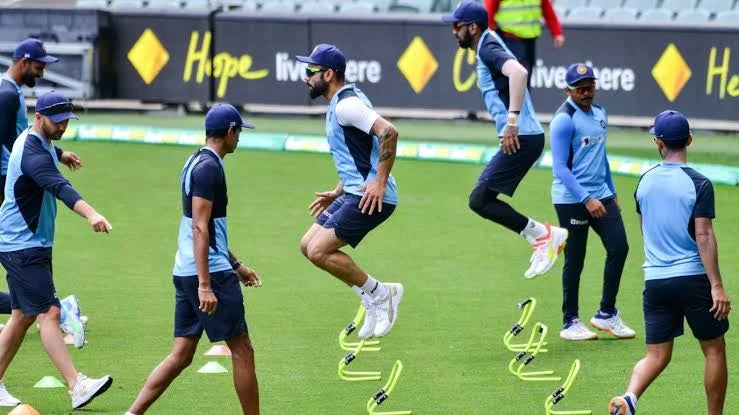Cricket Fitness Training is essential for players aiming to perform at the highest level. While skill development and technique often take the spotlight, physical conditioning directly influences batting, bowling, and fielding efficiency. Strong fitness levels help players withstand long matches, reduce injury risk, and maintain peak performance under pressure.
The Importance of Cricket Fitness Training
Modern cricket is faster and more physically demanding than ever. Players are expected to run between wickets, bowl fast spells, and field aggressively for hours. Without proper fitness, even the most technically skilled cricketers can struggle to sustain performance.
Cricket Fitness Training focuses on endurance, strength, speed, agility, and flexibility, ensuring that players can meet these rigorous demands. Teams with top-notch fitness levels often dominate matches, as they maintain energy and sharpness while others fatigue.
Key Components of Cricket Fitness Training
Effective cricket fitness programs target multiple aspects of physical conditioning. These include:
Strength and Power
Strength is the foundation of batting, bowling, and throwing. Bowlers require powerful legs and core to generate speed, while batsmen need upper-body strength for effective shots. Weight training, resistance bands, and bodyweight exercises help enhance muscular strength, which improves overall performance on the field.
Endurance and Stamina
Matches can last several hours, requiring players to maintain energy consistently. Cardiovascular training, such as running, cycling, and interval sprints, builds stamina. Endurance-focused Cricket Fitness Training ensures players can sustain intensity across long innings or bowling spells.
Agility and Speed
Quick footwork is vital for running between wickets, reacting in the field, and executing fast deliveries. Agility ladder drills, cone exercises, and shuttle runs enhance players’ ability to change direction swiftly and respond to game situations effectively.
Flexibility and Injury Prevention
Flexibility reduces muscle strain and improves movement range. Yoga, dynamic stretching, and mobility exercises are integral to Cricket Fitness Training. Players with better flexibility recover faster and face lower injury risks, which is crucial during long seasons.
Sport-Specific Fitness Drills
Cricket requires tailored exercises targeting specific match scenarios.
Batting-Specific Conditioning
Batting demands core stability, wrist strength, and explosive power. Rotational core exercises, medicine ball throws, and resistance band swings strengthen the muscles used for powerful and controlled shots. Sprint drills between wickets further enhance batting endurance.
Bowling-Specific Conditioning
Bowlers rely on leg drive, shoulder strength, and core rotation. Squats, lunges, planks, and shoulder stability exercises improve bowling speed and accuracy. Interval sprinting mimics the high-intensity bursts required during spells.
Fielding-Specific Conditioning
Fielders need agility, reflexes, and quick reaction times. Ladder drills, short sprints, catching drills, and lateral movement exercises refine footwork and improve fielding efficiency. Diving and catching practice enhances hand-eye coordination while building confidence under pressure.
Nutrition and Recovery
Cricket Fitness Training is incomplete without proper nutrition and recovery strategies. A balanced diet rich in proteins, complex carbohydrates, and healthy fats fuels performance and supports muscle repair. Hydration is equally critical, particularly in hot playing conditions.
Recovery practices such as stretching, foam rolling, ice baths, and sufficient sleep allow players to replenish energy stores, reduce fatigue, and prevent injuries. Nutrition and recovery complement physical training to maximize match readiness.
Mental Fitness and Focus
Physical conditioning alone is not enough. Mental sharpness impacts reaction time, decision-making, and stress management during games. Mindfulness exercises, visualization, and concentration drills are part of holistic Cricket Fitness Training programs. Players with strong mental and physical conditioning maintain composure in high-pressure situations.
Designing a Cricket Fitness Training Plan
A well-structured plan balances strength, endurance, agility, and recovery. Beginners should start with foundational exercises and gradually progress to sport-specific drills. Intermediate and professional players often follow periodized training cycles that align with pre-season, in-season, and off-season demands.
Tracking progress using wearable devices, video analysis, and fitness tests ensures players improve consistently. Regular coaching feedback helps correct technique and prevents overtraining.
Case Study: Elite Players and Fitness
Cricketers like Virat Kohli, Ben Stokes, and Mitchell Starc demonstrate the transformative impact of dedicated fitness programs. Kohli emphasizes high-intensity training, diet management, and core workouts to maintain performance across formats. Stokes and Starc combine strength, agility, and endurance routines to sustain peak output during long matches.
Learning from these examples, aspiring cricketers can understand the value of Cricket Fitness Training in achieving long-term success.
Integrating Fitness Into Daily Routine
Consistency is key. Short, focused daily sessions targeting strength, mobility, and agility produce better results than sporadic long workouts. Incorporating fitness into cricket practice, like combining sprint drills with batting or fielding drills, reinforces sport-specific conditioning.
Fitness routines should evolve with age, skill level, and playing demands. Maintaining a balance between workload and recovery prevents burnout and supports career longevity.
Benefits of Comprehensive Cricket Fitness Training
-
Enhanced endurance and reduced fatigue.
-
Improved batting, bowling, and fielding performance.
-
Lower risk of injuries.
-
Faster recovery after matches and training sessions.
-
Increased confidence and mental sharpness.
Cricketers who commit to structured Cricket Fitness Training not only elevate individual performance but also become valuable contributors to their team’s success. Physical preparedness complements skill, strategy, and mental strength to create complete players.
Read also:
south africa national cricket team vs afghanistan national cricket team match scorecard
australian men’s cricket team vs pakistan national cricket team match scorecard
pakistan national cricket team vs south africa national cricket team match scorecard
mumbai cricket team vs jammu and kashmir cricket team standings

